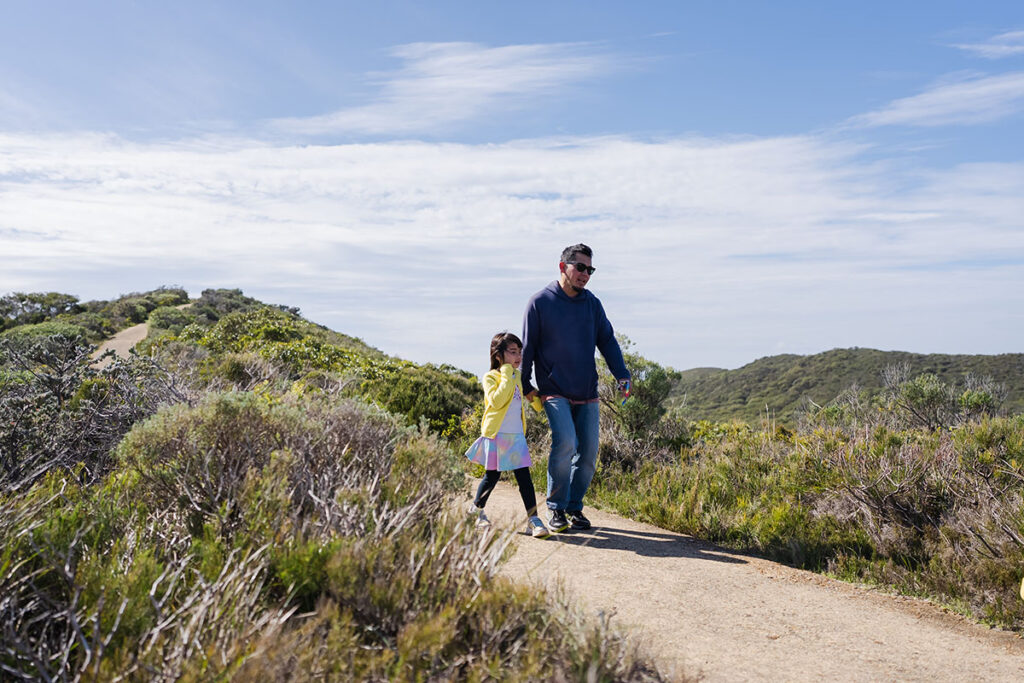Students investigate open space and its importance for the well-being of living things. Students first explore what open space looks like and feels like. Then they investigate why plants, animals, and people need open space. Understanding the role of open space in animal survival helps students connect with the natural world and think critically about how humans and animals can coexist.
This sparks wondering about different ways people use open space and how students use open space in their own lives. Students explore an outdoor area to experience the benefits of open space, which sparks curiosity about the people who maintain and protect open space. The unit culminates with students creating action plans to care for open space at school. By identifying the interdependence of living things to healthy open spaces, this unit lays the foundation in later grades to understand how open spaces can combat the effects of climate change.

“There is something for all different kinds of learners. We are moving spaces, drawing, talking in big and small groups, writing. Some of my kiddos who would have been disengaged quite possibly the entire time were engaged in at least two or more parts of this lesson.”
“This did a great job of piquing students’ interest and sparking opposing points of view, which created lively discussions on the topic.”
“I truly enjoyed teaching this. It has been heartwarming to see them care about other living things and the environment.”
“From my students: ‘Thank you for teaching us this lesson because if you didn’t it would be bad for our environment.’ ‘This was awesome! Can you do more? Thank you!’ ‘Thank you for helping us in taking care of the environment.'”
“I have learned ways to improve my teaching, and I have been at this for 38 years. The students are gaining a deeper understanding of what climate change is: what causes climate change, and the impact of climate change on crop yield.”
“What I find interesting is that students are discussing the material outside of class time. I heard students discussing the ideas before class in the hallways and even during lunch periods.”
“Students really enjoyed the hands-on activity. They were very interested to learn about the different pollutants that they’ve never heard of. It also developed their curiosity about air quality and pollution. It was an eye-opener for some that they are able to see what is mostly ‘unseen’ by everyone.”
“I heard comments like, ‘I didn’t realize how much climate change affects my community,’ and, ‘This project made me think about what I can do to help.'”
“I am so amazed and impressed by the depth of resources that you embedded in the teacher guide. This is really well put together.”
“When you’re out in the workforce, you’re trying to solve problems that don’t have a clear, immediate answer. So doing stuff like this helps give students practice.”
“They’ve never thought about stuff like this before, and now they’re sharing it. One girl said this was the only class that she went home and talked to her parents about.”
“Using the maps and seeing things like schools and how close they are to hazards is really cool. They may not be super connected personally, but they can put themselves in the shoes of other kids and try to relate. I know it’s working because I have a kid that just watches Netflix all day, every day and he pulled out his earbud and participated!”

Colby Lansou, Curriculum Developer
Angelle Lailhengue, Curriculum Developer
Emily Schell, University of San Diego
Roni Jones, Ten Strands
Stephanie Buttell-Maxin, CA Global Education Project
Mary Starr, Starr Science
Matt Ellinger, Designer
Elaine Klein, BSCS
Stacey Lane, Illustrator
Children’s Environmental Literacy Foundation
Amy Arcuri, Southern Humboldt JUSD
Elisabeth Eklou-Boccovi, Fremont USD
Patricia FitzSimmons, Rialto USD
Rachel Frisina, Fremont USD
Serena Inda, Round Valley School District
Coreene Kavanaugh, Petaluma City Schools
Anastasia Kodani, Los Angeles USD
Noelle Kreider, Rialto USD
Deb McCampbell, Cotati-Rohnert Park USD
Terri Moore, Los Angeles USD
Carinne Paddock, Oak Grove USD
Lisa Preston, Colfax ESD
Savannah Raskin, Vaughn Next Century Learning
You’ll get news on Seeds to Solutions and environmental literacy from Ten Strands
"*" indicates required fields
© 2025 San Mateo County Office of Education and Ten Strands | Terms of Use | Privacy Policy